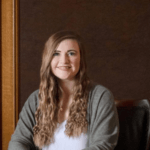Exploring all the options in an economic developer’s toolbox has never been more important. With populations in decline and ageing small business communities, plus a global pandemic and widespread drought, rural leaders face many challenges, and things can be overwhelming. However, the co-operative business structure offers rural leaders more opportunities than they might have guessed.

Lana Cowling-Mason, General Manager for Community Futures West Interlake
Lana Cowling-Mason, General Manager for Community Futures West Interlake, is the region’s economic development expert. The rural region has many small communities, the largest being around 3,500. It is experiencing tough times, and Cowling-Mason said that just keeping what they have is a challenge — let alone trying to grow.
“For the communities that I deal with, in all honesty, it’s about maintaining our community’s population,” says Cowling-Mason. “Growth would be great, but if I can hold our population, that would be fantastic, and that’s what success is gonna look like for us for a little while: to just maintain what we’ve got.”
Change brings opportunity
But change often brings opportunity and that has never been truer for rural communities.
With remote work and increasingly high-quality internet, rural leaders have a chance to attract new people and investment to their communities. The high quality of life, slower pace and often less costly housing are attractive features. But communities still compete with their neighbours. How can a rural community stand out?
Lauren Johnson, Economic Development Officer for the Town of Shaunavon in Saskatchewan, suggests investing in yourself.
Invest in yourself

Lauren Johnson, Economic Development Officer, Shaunavon, SK
“Nobody understands your community, your goals, your vision, and nobody believes in it as much as you do,” said Johnson. “So, to really get that momentum going, you really just need to kickstart it somehow. Investing in yourself is the best way to do that.”
Cowling-Mason also says she’s found that you should invest in yourself if you want others to invest in you.
“When you’re sitting there going: why isn’t the government trying to help? And why isn’t there a program for this? Why isn’t there a program for that? Why should anybody invest in you if you’re not prepared to invest in yourself? If you have no skin in this game, then why would anybody else risk their skin for you?” she said.
Understand what you can control
For people in West Interlake, the realization they needed to invest in themselves came out of the increasing pace of change they were experiencing coupled with retreating investment from external partners.
“It really came out of that frustration: are we going to sit here and be a victim of the change that’s happening in our communities?” said Cowling-Mason, “Or are we going to manage this change? And what does that look like?”
The first step for the leaders in Cowling-Mason’s region was to take stock of what they could control, and identify where they should invest to get the most bang for their buck.
“Invest in the time that it takes to have the right decisions in front of you,” Cowling-Mason said. “Because even if that solution does show up from somewhere else, it may not be the solution to the problem you have.”
The role of non-profits, raising seed capital and adding security
The economics behind certain types of capital projects, such as housing for seniors in Cowling-Mason’s case, is often not good enough to attract external investment. So, groups of volunteers, non-profits or even social enterprises tend to drive these types of capital-intensive initiatives. That can make getting traditional financing a challenge, she said.
“They’re providing critical services but are doing it from that nonprofit standpoint,” said Cowling-Mason. “With those kinds of projects, generally, there’s always a local portion that needs to be realized by the community in order to leverage anything coming from the outside, whether that be external traditional financing or grants sources. What becomes our biggest challenge is with traditional financing – accessing capital is hindered by the lack of security.”
Many small parts together can do big things
To gain access to this capital, and eventually make the housing project commercially viable, leaders from Cowling-Mason’s region are starting an investment co-operative.
“We don’t expect people to go empty their savings account and put $100,000 investments in here,” she said. “What we’re asking is to find 1,000 people who have $1,000.”
The enterprise is hoping to raise enough patient capital to get the project off the ground and secure a mortgage. While every solution isn’t for every place, Cowling-Mason said they are exploring this option to the fullest because “not doing anything is not an option — unless you’re giving up.”
And we all know rural people are not about to give up.
NOTE: To watch the full conversation with Lana and Lauren, check out the recorded webinar HERE.
Feature Photo by Gower Brown on Unsplash

 Written by
Written by 


